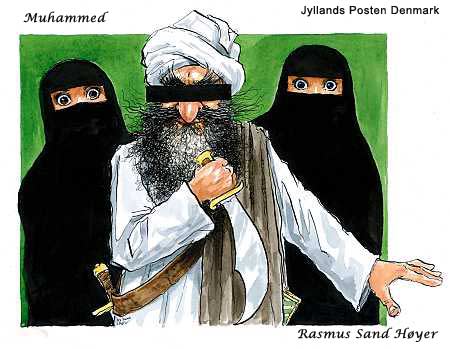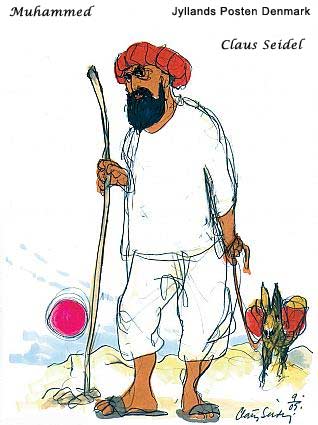A commenter questioned my questioning Art Spiegelman’s statement that this cartoon is racist — not just critical of Islam, or at least of some strands of Islam, but racist (or perhaps more precisely “ethnically bigoted,” though for our purposes we can view the two as roughly interchangeable):

I know that people have sometimes argued that any cartoons that depict stereotypical racial or ethnic features are racist; but I’ve never been quite persuaded about that, whether as to such cartoons that depict Jews (a common source of this argument) or as to cartoons that depict Arabs.
Cartoons, like illustrations generally, are supposed to provide images that at least have the air of verisimilitude. If one is to depict a generic Jew, a generic Arab, a generic Swede, or an archetypal Arab whose true appearance is unknown (here, Mohammed) one ought to depict him in a way that makes people recognize what is being discussed. “A conventional, formulaic, and oversimplified conception, opinion, or image” (the definition of stereotype) may be unsound if used as an overgeneralization about people’s traits — but that’s what cartooning requires. If you can’t use characteristic features of a group’s appearance, effective cartooning — or illustration generally — becomes much harder, in my view unjustifiably harder.
I think the matter is different if the features are portrayed in a way that makes them look ridiculous or disgusting. At some point, exaggeration, for instance a ridiculously beaked nose on a Jew or on an Arab, or exaggerated lips on a cartoon depicting someone black, does make the subject look that way, and may be seen as an aspersion on the ethnic group to which the person belongs. But the important point, in my view, is that this is true as to certain sufficiently exaggerated or distorted depictions, not as to depictions of stereotypical features generally.
The cartoon does depict Mohammed negatively — but because of what he’s doing, coupled with the fierce cast of his features (which is not necessarily linked to their stereotypical qualities). One might compare it, for instance, with this cartoon:

The features are comparable, though not identical; but the latter cartoon seems like a humanizing and even compassionate portrait. It’s the message of hostility to a particular religious belief system embodied by Mohammed that differentiates the two, not that one uses somehow inherently “racist” imagery and the other doesn’t.
In any case, that’s my take on it. Perhaps I’m mistaken, but it seems to me that the permissible stereotyping vs. exaggeration to make the group look ridiculous or disgusting distinction is an important one, and that visual stereotyping can’t be universally condemned at least where cartooning is concerned.
But, as I said before, the more important point is that one can’t even have this discussion unless one can see the cartoons themselves — further evidence that it’s unsound to argue, as the New York Times did, that “report[ing] on the cartoons but refrain[ing] from showing them” “seems a reasonable choice for news organizations that usually refrain from gratuitous assaults on religious symbols, especially since the cartoons are so easy to describe in words.”
UPDATE: Thanks to Human Events Online for the high-resolution cartoons, and to reader Nels Nelson for the pointer to those cartoons.